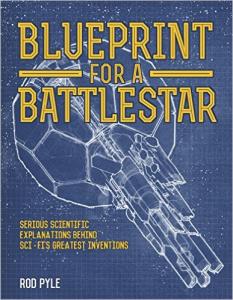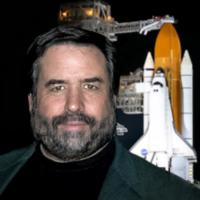Rod Pyle: Blueprint for a Battlestar
SERIOUS SCIENTIFIC EXPLANATIONS
BEHIND SCI-FI’S GREATEST INVENTIONS
Rod Pyle
Sterling Publishing (U.S.) $24.95, Aurum (U.K.), £20.00, Oct. 11, 2016
ISBN-10: 145492134X; ISBN-13: 978-1454921349
ASIN: B01KYGNH6I
Pyle reports:
The idea for this book began via conversations with an editor I’d worked with previously on Missions to the Moon (Carlton/Sterling, 2009). We discussed a number of concepts during 2014 before agreeing to create a book about the science of sci-fi. A more formal proposal followed. We collaborated to create a number of sample book spreads, since it is a heavily illustrated book. I worked out an agreement with the publisher in the UK, Aurum/Quarto, and then had the contract negotiated by my agent. Sterling joined the project for U.S. publication.
Working from an agreed-upon table of contents, I created a database of topics, researched each for past history (origins of the laser, for example), current uses, and the state of the technology in question, e.g., medical, industrial, entertainment, and military uses. Then I sought out near-future potential, including miniaturization, further development in medical uses, high-powered weaponry, and industrial applications.Sources included universities and institutes, private companies, small entrepreneurs, engineers, and scientists in various areas of employment. I consulted the usual databases and reference sources, and a lot of popular articles and periodicals. Fact-checking can be challenging for some of these technologies, since things change and advance rapidly, but with some able assistance it all came together. A final "science" pass was performed by a very capable (and brilliant) Caltech PhD.
Some of the topics we considered early-on, such as teleportation, were set aside as a bit too far off in the future. Other topics, such as hoverboards, are generally unlikely to be developed in a mass-market form in the near future, but were simply too much fun to set aside. There are nonetheless companies or individuals continuing to work on some of these "unlikely" topics, hoverboards among them, though most use technologies that will provide a less satisfying experience than that seen in Back to the Future II. Jetpacks, lightsabers, and a few others fall into this category.
In the end, I wish I'd had more time to work on and edit the book. When projects such as this are so engaging, don’t we always feel we could use a few more months?
Contact info:
- Rod Pyle, 626-399-4440, rodpyle@yahoo.com, http://www.pylebooks.com
- Publicist: Ardi Alspach, 646-688-2450, AAlspach@sterlingpublishing.com
- Agent: John Willig, 609-698-7162, wlitagent@msn.com
- Book website: https://www.quartoknows.com/books/9781781315934/Blueprint-for-a-Battlestar.html
- Book blog: http://www.pylebooks.com/blog
NASW members: will your book be published soon? Take advantage of this opportunity for shameless self-promotion. Submit your report for Advance Copy.
Tell your fellow NASW members how you came up with the idea for your book, developed a proposal, found an agent and publisher, funded and conducted research, and put the book together. Include what you wish you had known before you began working on your book, or had done differently.
See https://www.nasw.org/advance-copy-submission-guidelines.
Thinking of writing a book? If you are a NASW member, you may access a list of more than 150 books and online resources to help you craft your book proposal, find an agent and funding sources, negotiate your contract, learn about self-publishing, publicize and market your book, and more at https://www.nasw.org/article/write-book.
Send book info and questions about book publishing to Lynne Lamberg, NASW book editor, llamberg@nasw.org.




